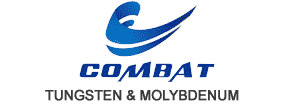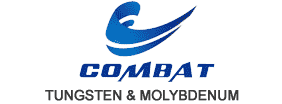Why is it difficult for CNC machine tools to cut titanium alloy materials?
Author:kangbote Time:2021-01-15 16:09:21
Why is it difficult for CNC machine tools to cut titanium alloy materials?
Transfer from China Titanium Industry Net
Titanium alloy material has the characteristics of high strength, high hardness and low density. For example, the tensile strength of titanium alloy Ti-6Al-4V (Ti-6-4 for short) reaches 900MPa, the hardness is 250 ~ 375HB, and the density is 4.42 g/cm3, making In addition to being widely used in modern military aircraft, titanium alloy integral structural parts have also been used more and more in modern large passenger aircraft. The weight of its materials as a percentage of the total weight of the aircraft structure has shown a rapid upward trend. Began to exceed the steel structure. Therefore, achieving high-efficiency machining of titanium alloy structural parts has become the key to large aircraft manufacturing. However, compared with aluminum alloy materials, titanium alloy materials are difficult to machine, and the difficulties in cutting are mainly manifested in the following aspects:
High cutting force
As we all know, the higher the hardness and strength of metal materials, the greater the cutting force required for cutting, the higher the cutting temperature, the faster the tool wear, and the worse the relative machinability. For example, the relative machinability coefficient Kr of aluminum alloy is 2.0-7.5, the Kr of high-strength steel is 0.3-0.7, the Kr of titanium alloy is 0.22-0.35, and the Kr of high-strength aerospace alloy is only 0.07-0.3. Therefore, compared with the cutting of light metal materials such as aluminum alloys, the cutting of titanium alloys requires greater cutting force, usually nearly 1,000 to thousands of newtons (Newton, N), which is 2 to 4 times that of ordinary steel, and is aluminum alloy 10 to 40 times the material. For example, a 4-tooth 32mm diameter end mill with a cutting depth of 19mm and a metal removal rate of 20 cm3/min will produce 4,445N (1,000 lbs) load force when cutting titanium alloy materials. If the tool wears 50%, the load The force will increase to 8,890N. Therefore, the large cutting force required to process hard alloy materials such as titanium alloys means that high-torque spindles are required, or that only lower cutting speeds are allowed, which is only about 10% of that of aluminum alloy materials.
High cutting temperature
When cutting titanium alloy materials, the contact surface between the chip and the rake of the tool is usually small, and the temperature of the cutting point is extremely high, reaching about 1,100~1,200 ℃. The high temperature state of the cutting zone will easily cause the tool tip to melt or stick quickly, resulting in the tool Badly worn. In addition, the thermal conductivity of titanium alloys is low, about 15% of that of alloy steels and 5% of aluminum alloys. (The thermal conductivity of titanium is 15.24 W/mK; titanium alloy Ti-6-4 is 7.56 W/mK; AISI 4340 alloy Steel is 44.6 W/mK; No. 45 steel is 50.2 W/mK; 7075 aluminum alloy is 130W/mK). About 80% of the heat generated during cutting is transferred to the tool, unlike typical high-speed cutting aluminum As with metal materials such as alloys, 75% of the heat is transferred to the chips, and only about 15% is transferred to the tool. Therefore, the high temperature heat at the cutting point of the tool during the cutting of titanium alloy is difficult to be quickly taken away by the chips, which accelerates the wear of the tool. This also determines that high-pressure and large-flow coolant must be used for cutting titanium alloy materials.
Easy to form hardened layer
Titanium is highly chemically active, and chemical reactions are prone to occur at high temperatures, leading to the formation of a hardened layer on the cutting surface, the depth of which can reach 0.1-0.15 mm, which greatly increases the hardness of the surface and accelerates tool wear. At the same time, high chemical activity leads to serious bonding of chips and tools during processing, which also accelerates tool wear.
High friction work
Titanium alloy has a large friction coefficient, which leads to a large friction work required when chips flow through the rake face of the tool during the cutting process, and the friction interface temperature is extremely high, which further accelerates tool wear.
Easy to produce elastic deformation and vibration
The modulus of elasticity of titanium alloy is small (110kN/mm2 for titanium alloy Ti-6-4, steel Ck45110kN/mm2, 210kN/mm2), which causes elastic deformation and vibration during cutting, which not only affects the machining dimensional accuracy and surface roughness of parts , And the elastic recovery of the machined surface is greater, about 2 to 3 times that of stainless steel, which can also accelerate tool wear. At the same time, the low elastic modulus of titanium alloy makes it have obvious rubber characteristics, which is likely to cause chipping on the cutting edge of the tool. It can also accelerate tool wear and restrict the use of high cutting speeds.
Low cutting speed
The aforementioned problems in the cutting of titanium alloys will result in severe tool wear during the cutting process and reduced tool durability. Therefore, in order to improve the processing performance of titanium alloy materials and ensure the service life of cutting tools, it is usually required to use lower cutting speeds for cutting titanium alloy materials. If traditional machining methods are used to cut titanium alloy parts, the cutting speed generally does not exceed 40-50m/min, the metal removal rate mrr during rough machining is generally not more than 40cm3/min, and mrr during finishing is generally not more than l0cm3/min. When using HEM-HSM processing, the current cutting speed can reach 100~1,200m/min, and the metal removal rate mrr can reach 700cm3/min, as shown in the figure. However, in actual industrial production, it is generally lower than this maximum value to ensure that the tool has sufficient durability. The typical cutting speed is 100~400m/min, and the metal removal rate mrr is typically 100~400cm3/min.






.jpg)
封面.jpg)
.jpg)
.jpg)




